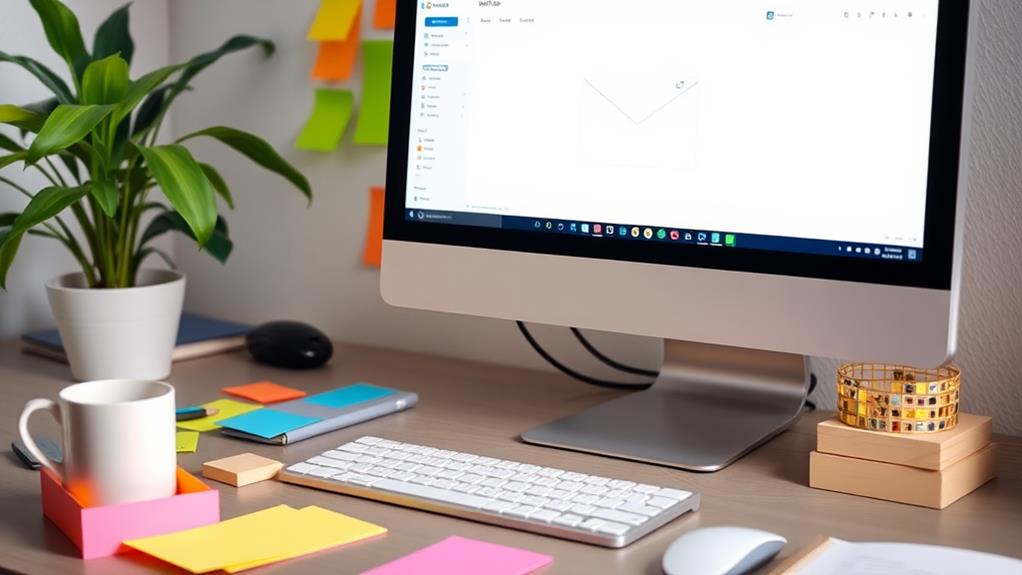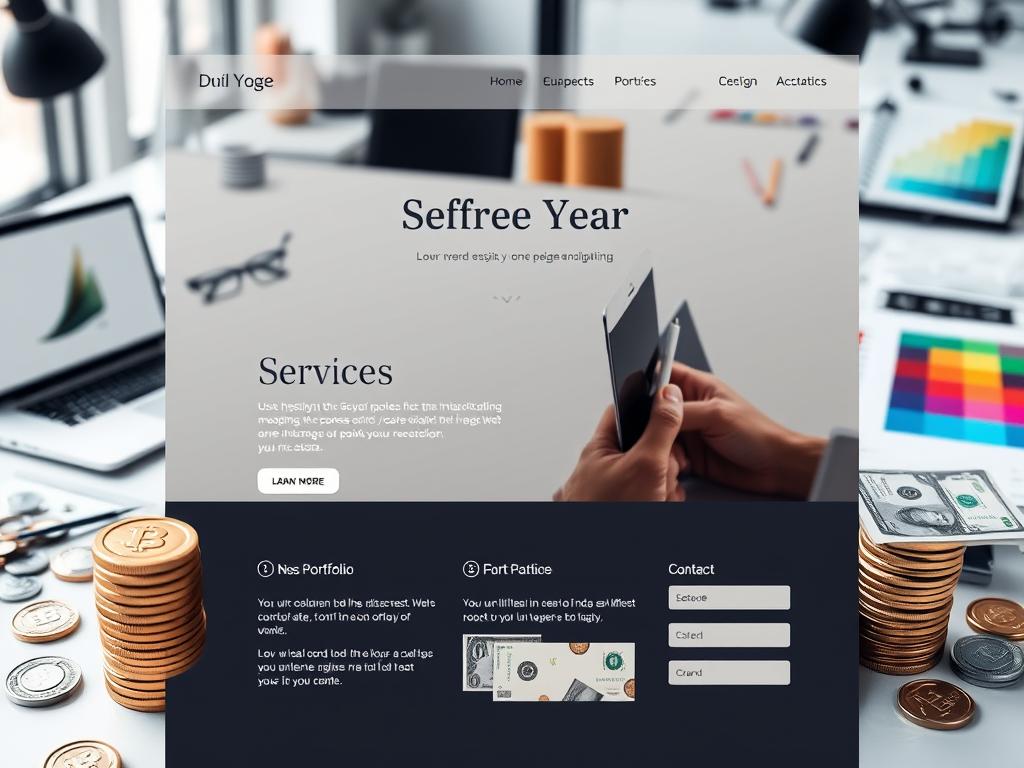Releasing the power of email clients can transform how you manage communication and tasks. By choosing the right client, you improve organization through effective inbox management, filtering, and prioritization. Synchronizing across devices keeps you connected and responsive, regardless of where you are. Plus, email clients often integrate seamlessly with tools like calendars and task managers, streamlining your workflow even further. Prioritizing security features, such as encryption and strong passwords, protects your data. You’re on the brink of maximizing efficiency and productivity, and there’s much more to discover that could raise your email experience even further.
Key Takeaways
- Choose the right email client type desktop, mobile, or web-based to optimize your workflow and communication efficiency.
- Utilize inbox management features to categorize and prioritize emails for better organization and responsiveness.
- Integrate email clients with calendar and task management tools to enhance time management and streamline project tracking.
- Implement strong security measures, such as encryption and two-factor authentication, to protect sensitive communications from threats.
- Explore email customization options to tailor the interface and settings, improving overall usability and personal efficiency.
Understanding Email Clients
Comprehending email clients is essential for anyone looking to improve their communication efficiency. By grasping how email protocols like SMTP, IMAP, and POP3 function, you can resolve issues and guarantee smooth email operations.
Email clients streamline your inbox organization, turning chaotic messages into manageable threads. With features that allow you to categorize, prioritize, and filter emails, you’ll spend less time sifting through your inbox and more time focusing on what truly matters.
They act as your personal assistant, providing notifications when new messages arrive and syncing across devices seamlessly. Embracing the right email client can greatly boost your productivity, assuring that you stay organized and responsive in today’s fast-paced digital world.
Types of Email Clients
When maneuvering through the world of email clients, comprehending the different types available can greatly improve your communication experience.
Each type offers unique benefits tailored to your needs. Here’s a quick overview:
- Desktop Applications: Standalone programs like Outlook and Thunderbird provide robust features and offline access.
- Mobile Apps: Designed for smartphones and tablets, these apps, like Gmail and Apple Mail, guarantee you can manage emails on the go.
- Web-based Solutions: Accessible via browsers, services like Gmail and Yahoo Mail offer portability and easy email customization.
- Email Customization: Many clients allow you to personalize settings, making your email experience more efficient and enjoyable.
Choosing the right type not only improves communication but also optimizes your workflow.
Key Features to Consider
Selecting the right email client hinges on comprehending the key features that can greatly boost your experience and productivity. Focus on aspects like email organization and user customization to streamline your workflow.
| Feature | Importance |
|---|---|
| Inbox Management | Helps categorize and prioritize emails |
| User Customization | Tailors the interface to your preferences |
| Calendar Integration | Syncs tasks and important dates |
| Security Features | Protects against phishing and spam |
When you carefully evaluate these features, you’ll find an email client that not only meets your specific needs but also improves your daily tasks. Make the choice that strengthens your communication and keeps you organized!
Security in Email Communication
Security is vital in email communication, as it serves as the gateway to both personal and professional interactions.
To protect yourself and your data, consider these essential strategies:
- Use Email Encryption: Encrypt your emails to guarantee only intended recipients can read them.
- Implement Strong Passwords: Create complex passwords and change them regularly to safeguard your accounts.
- Enable Two-Factor Authentication: Add an extra layer of security to prevent unauthorized access.
- Stay Aware of Phishing Attempts: Always verify email sources to avoid falling victim to fraudulent schemes.
Practical Use Cases
With the right security measures in place, you can fully utilize email clients for various practical use cases that improve both personal and professional communication.
For starters, email marketing campaigns can be seamlessly managed through email clients, allowing you to create targeted messages and track engagement metrics effectively. This improves your outreach and boosts conversion rates.
Additionally, integrating task management features helps you stay organized. You can set reminders, track deadlines, and manage projects without juggling multiple applications.
Integration With Other Tools
Integrating email clients with other tools can considerably improve your productivity and communication efficiency. By leveraging these integrations, you can access automation benefits that streamline your workflow and improve your overall effectiveness.
Here are four key integrations to evaluate:
- Calendar Apps: Sync your email with calendar tools to manage appointments effortlessly.
- Task Management Tools: Integrate task managers to convert emails into actionable tasks, ensuring nothing slips through the cracks.
- CRM Systems: Connect with CRM platforms for centralized customer communications, improving engagement and understanding.
- Marketing Automation: Use marketing tools to automate email campaigns, saving time while maximizing outreach.
These integrations not only reduce manual processes but also lead to notable productivity improvement, allowing you to focus on what truly matters.
Selecting the Right Email Client
Choosing the right email client can make a substantial difference in your daily productivity and communication efficiency. You need to align your user preferences with client performance to find the best fit.
Consider what features matter to you? Do you need robust security, advanced filtering, or seamless integration with other tools? Evaluate both desktop and mobile options, as your workflow might involve multiple devices.
Test a few clients to see which interface feels most intuitive. Remember, the best email client isn?�t just about aesthetics; it’s about how well it improves your workflow and reduces stress.
Prioritize those that offer easy navigation and effective management tools to streamline your email experience and boost your overall productivity.
Frequently Asked Questions
How Do Email Clients Handle Large Attachments Effectively?
Imagine your email client throwing a tantrum because you’ve dared to attach a 50MB file.
With attachment limits, it can feel like a digital diet! Thankfully, most email clients tackle this by offering file compression, squeezing those oversized attachments down to size.
Can I Use Multiple Email Accounts in One Client?
Yes, you can use multiple email accounts in one client, and it’s a smart move.
By configuring your accounts correctly, you’ll streamline your workflow and simplify email synchronization across devices.
This setup allows you to manage all your communications in one place, saving you time and reducing stress.
With just a few clicks, you’ll be able to switch between accounts effortlessly, enhancing your productivity and keeping everything organized.
What Are the Best Practices for Organizing My Inbox?
Picture your inbox as a well-kept garden, flourishing with organization. To nurture it, use inbox categorization to separate personal, work, and promotional emails.
Implement email filters like a gardener’s trellis, guiding messages into designated folders automatically. This strategic approach not only helps you find important emails quickly but also reduces clutter.
Embrace these best practices, and watch your productivity bloom as you navigate your email environment with ease and efficiency.
How Can I Recover Deleted Emails From My Client?
If you’ve accidentally deleted emails, don’t panic!
You can utilize email recovery methods like checking your “Trash” or “Deleted Items” folder, as many clients hold deleted emails temporarily.
If you don’t find them there, investigate your email provider’s recovery options some offer a retrieval feature for recently deleted items.
Acting quickly increases your chances for successful deleted email retrieval, so plunge in and start searching now!
Are There Email Clients Specifically Designed for Businesses?
Yes, there are email clients specifically designed for businesses.
These business email solutions offer essential client features like advanced security, collaboration tools, and integration with productivity apps. They streamline communication and improve team efficiency, allowing you to manage tasks effectively.
When choosing an email client for your business, consider factors like scalability, user-friendliness, and support options. Investing in the right client can greatly enhance your team’s productivity and communication effectiveness.





